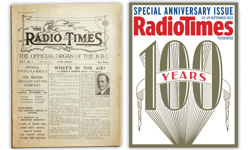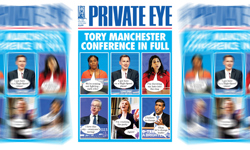As a young man living in 1970s America, Mike Perlis did everything he could to avoid going to Vietnam. So it is ironic that when we meet, he is eagerly looking forward to visiting that country to launch a Vietnamese edition of Forbes, the 96-year-old business magazine brand of which he has been President and CEO for the past two and a half years.
Forbes may be approaching its centenary, but since Perlis joined as the first non-family member to run the business, the legendary US title has enjoyed an incredible revival in its fortunes. The brand is not just growing internationally – by the end of 2013, the number of local language editions of the magazine will have doubled under Perlis’s leadership from 15 to 30; its real success story is online.
Digital success
This spring, the publisher announced that in March 2013, it attracted 26.2 million unique monthly users to its website Forbes.com, a year-on-year increase of 50 per cent, according to comScore. The website attracted 1.5 million more unique visitors than the Wall Street Journal’s WSJ.com in that month and was ahead of other competitors including Time.com, Bloomberg.com, NationalGeographic.com, CNNMoney.com, BusinessWeek.com, CNBC.com, TheEconomist.com and FT.com. Since its reinvention in June 2010, Forbes.com has achieved a 117 per cent increase in unique monthly visitors.
In 2012, advertising revenues from the print edition of the magazine and from the website were neck and neck, and in 2013, digital advertising revenues are set to overtake print, although the magazine will continue to bring in more money overall thanks to circulation revenues.
Perlis, a dapper, silver-haired 59-year-old, who was once President of the Playboy Publishing Group, is in London to speak at a Financial Times conference. But he has no plans to take on the Pink ‘Un on its own territory. When we meet over coffee and pastries, London is looking at its best in the sunshine, but it is clear that the UK, with its sluggish economy, is not of sufficient interest to the expansionist publisher.
Perlis explains: “Wherever there are emerging economies, specifically in Thailand, Vietnam, Malaysia and Indonesia, we have launched new editions of Forbes. The Russian edition of Forbes looks like the September edition of Vogue: it’s big and fat. Wherever entrepreneurship and free market capitalism are driving the dynamic, Forbes is in high demand and we’re trying to meet that demand.”
After graduating with a BA in Communications from Syracuse University in New York State in 1976, Perlis began his career in publishing as the co-founder of New England Publications, based in Camden, Maine. Immediately prior to joining Forbes, Perlis worked for SoftBank Capital, a venture capital firm specialising in high-growth internet-based businesses, while he has also held senior roles at technology publisher Ziff-Davis, Men’s Health publisher Rodale, and the computer magazine publisher International Data Group.
He says: “I’ve been in the content business since I was 20 years old. I started my own magazine publishing company as a young guy and the philosophy that I learned then and embrace today is, if you create great content, you create a compelling relationship with the audience and off that you are able to create a business.”
He adds; “In the past, that relationship has often been defined by how much the audience is willing to pay for content. The internet has proven that the value of content is not simply about what people are willing to pay for it.”
While the cover price of the fortnightly print edition of Forbes remains comparatively high, costing more than £5 at newsstands in the UK, Forbes.com has never charged for access and has no plans to do so, although Perlis does not rule out asking people to pay for premium content in the future.
Contributor model
The key to the website’s success is its unique contributor-based model. As well as a core staff of around 100 writers and editors, Forbes has signed up more than 1,100 contributors: academics, business people and experts; to whom it has granted access to its tools allowing them to create their own ‘homepage’, on to which they can post articles and then share them via their own social networks. There is a financial incentive for contributors to spread the word about their posts: they are recompensed by Forbes based on the number of unique visitors they attract, and are paid extra for repeat visits. In 2012, two contributors made $100,000, more than 10 were paid $75,000 and 25 earned $35,000. Technology posts consistently prove the most popular on the site, followed by posts on breaking business news, investing, leadership and gaming.
Perlis insists that this network of contributors is carefully selected and what they write is closely monitored, although posts are not edited before they go up on the website. “The most important decisions we make are when we onboard those contributors. We vet them very carefully; we choose them for their experience, for their expertise, for their passions and we teach them a great deal as they come on board. We manage talent and we monitor content.” This model might not work for a breaking news site, but is well suited to Forbes, Perlis believes. “We’re about finance and business and the overarching dynamics in those spaces. We’re more reflective and our contributors understand that.”
BrandVoice
Forbes.com has also led the way in the emerging field of native advertising, recently embraced by InPublishing, and now even adopted by that bastion of editorial integrity, the Washington Post. Forbes BrandVoice, which was launched three years ago and promises to ‘connect marketers to the Forbes audience’ through posts written by, but not directly promoting, the brands who produce them, is clearly distinguished in a red font and frequently takes on the name of the advertiser posting: for example, GyroVoice or SAPVoice. BrandVoice has been criticised by Frédéric Filloux, media blogger and general manager of the French consortium ePresse for ‘blurring the line a bit too much’, but Perlis believes comparisons to advertorial are ‘old-fashioned’. “In addition to our full-time journalists, in addition to our contributors and the many thousand points of communication that exist in this highly social world of media that we live in today, we also felt that marketers have non-promotional content oriented towards defining who their companies are that is valuable and interesting and appropriate for our readers to see. So, in a very clearly-marked, transparent way, we give marketers the opportunity to post their own thought leadership to a home page on Forbes.com.” He adds, “It’s a very small part of the puzzle. We put up 400-500 pieces of content a day and the BrandVoice posts are 10-12 a day in that mix.” In terms of revenue, BrandVoice usually forms part of a wider advertising package, together with online display advertising and print. In 2012, ten per cent of the company’s digital revenue came from advertisers who participated in BrandVoice, who pay either $50,000 or $75,000 per month for a site license, in addition to traditional media impressions.
Print still core
Despite digital success, Perlis has not given up on print, which remains at the core of his strategy to maximise the value of the iconic brand. “Our business is a good business, but it’s relatively small compared to the size and the scope and how well-known the brand is,” he explains. “The cover of the magazine is the front door to the whole of the brand. It’s the authority that allows us to do all the things we’re doing in the other parts of our business.”
He is insistent that Forbes will not be giving up on print any time soon: “As a magazinist for most of my life, I cringe when I think about the idea of a publication like Newsweek being sold for a couple of bucks.” The circulation of Forbes magazine in the US remains steady at around 900,000. “We’ve always been very sober about how we manage our print business. We don’t over-promote for circulation. That allows us to weather the ups and downs of the advertising marketplace. I think there’s a very loyal group of readers for Forbes in the US and now around the world. We continue to invest in print and we think it’s important.” However, he later concedes that the publisher is managing print circulation in the US to be flat.
In January, Forbes launched a tablet edition, with features such as the ability to click-through to advertisers’ websites, and, so far, there have been 264,000 downloads of the magazine. But Perlis is clearly more focused on the website than tablet publishing. He argues, “A lot of traditional publishers look at the tablet as their digital future. For us, it’s an augmentation of print.” Currently, 30 per cent of traffic to Forbes.com is from mobile devices.
Another prong of Perlis’s strategy is brand extensions, including conferences, newsletters, an online education business, a wine club and even clothing. Again, he is looking towards emerging markets: “We had the opportunity to do young men’s shoes and business suits in China with a Forbes logo. In Asia, for a young man entering the business world, there is nothing like Brookes Brothers or Marks and Spencer. A Forbes garment would indicate success and upward mobility.”
Technology is also key to Perlis’s vision for Forbes. Having created its own contributors’ platform for Forbes.com, the company plans to license the software to other publishers, and is on the brink of signing a licensing partnership with a well-known brand.
As a private company, Forbes does not open up its books to public view, but in a time when most titles have seen revenues remain flat or go down, Forbes has grown both gross numbers and profit by around ten per cent. Perlis reveals: “In 2012, in a disrupted marketplace, Forbes Media achieved its best financial performance in the last five years.” The return from the investment made in the business over the last couple of years is yet to come, but Perlis is confident “we’ll reach that later this year, and ’14/’15 will be very gratifying”.












